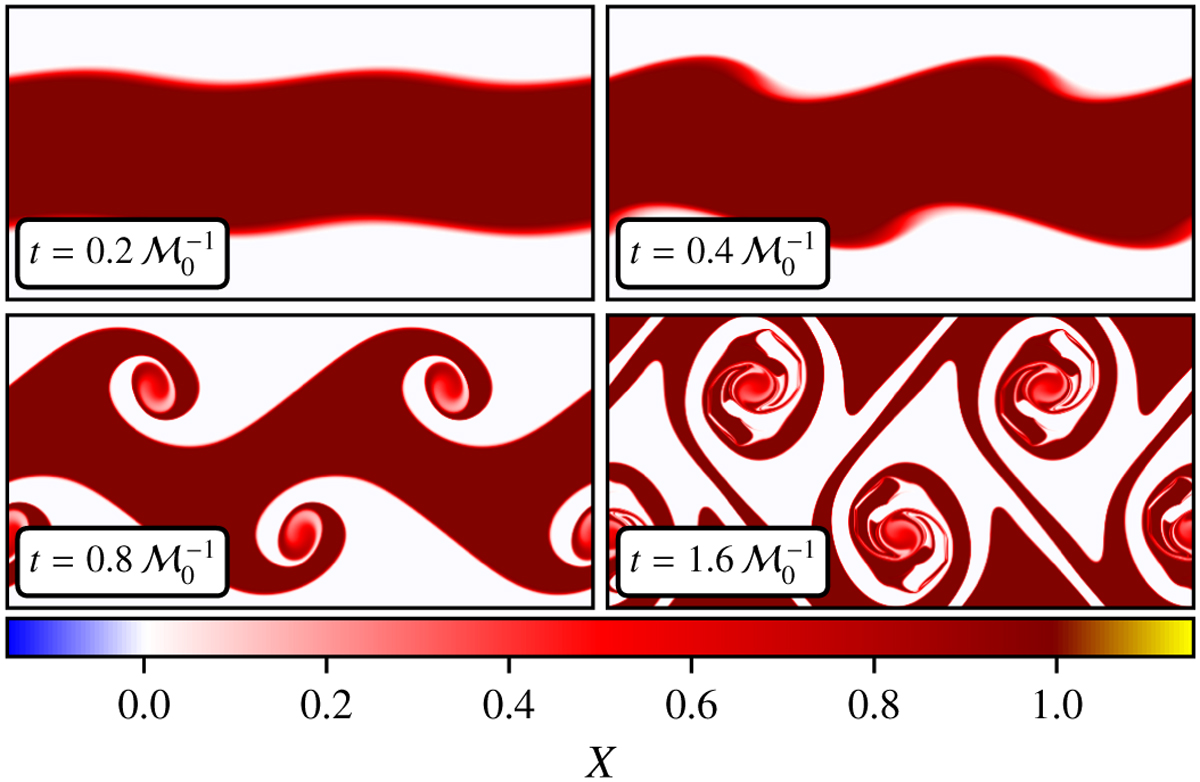Fig. 2

Download original image
Reference solution to the Kelvin–Helmholtz problem with initial Mach number ![]() 0 = 10−2. The solution was computed using PSH reconstruction and the LHLLC flux function on an 8192 × 4096 grid. The mass fraction X of the passive scalar is shown at four points in time: late in the linear growth of the instability (t = 0.2
0 = 10−2. The solution was computed using PSH reconstruction and the LHLLC flux function on an 8192 × 4096 grid. The mass fraction X of the passive scalar is shown at four points in time: late in the linear growth of the instability (t = 0.2 ![]() 0−1), at an early stage of nonlinear evolution (t = 0.4
0−1), at an early stage of nonlinear evolution (t = 0.4 ![]() 0−1), at a stage when the primary vortices have fully formed (t = 0.8
0−1), at a stage when the primary vortices have fully formed (t = 0.8 ![]() 0−1; the final time for all of our other Kelvin–Helmholtz simulations), and at a late stage when fine threads have formed inside the primary vortices (t = 1.6
0−1; the final time for all of our other Kelvin–Helmholtz simulations), and at a late stage when fine threads have formed inside the primary vortices (t = 1.6 ![]() 0−1). We use the same color scale as in Figs. 4, D.2, and D.1, although 0 ≲ X & ≲ 1 in the reference solution.
0−1). We use the same color scale as in Figs. 4, D.2, and D.1, although 0 ≲ X & ≲ 1 in the reference solution.
Current usage metrics show cumulative count of Article Views (full-text article views including HTML views, PDF and ePub downloads, according to the available data) and Abstracts Views on Vision4Press platform.
Data correspond to usage on the plateform after 2015. The current usage metrics is available 48-96 hours after online publication and is updated daily on week days.
Initial download of the metrics may take a while.


